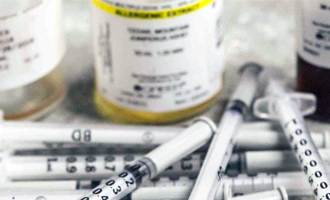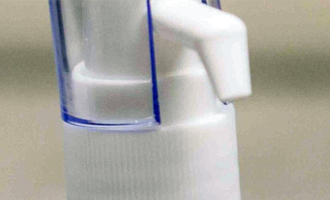Oral Food Challenge
The oral food challenge is performed to see if a potentially allergic food may be safely ingested. Since many children outgrow food allergies, especially to milk and eggs, the challenge test is used to see if a food allergy has been outgrown. As the blood and skin tests for food allergies are not 100% accurate, the food challenge is a useful tool.
The suspected food is ingested in increasing amounts in a controlled medical setting and then the patient is observed for a period of time. The test is performed in the office with a physician present and emergency treatment such as epinephrine and oxygen available.
Risks: Allergic food reactions usually involve skin reactions such as hives on the face and body. Some reactions may be more severe and involve difficulty breathing in the throat and chest or a drop in blood pressure resulting in a loss of consciousness. Fatalities may occur with allergic food reactions.
Our physician’s careful selection and screening process of food challenge patients has resulted in a successful passing rate of over 90% of food challenges performed. We have had challenge failures even with an allergy blood test score of 0. Most of the failed challenges have required treatment with epinephrine. None of our patients have required hospitalization due to a failed food challenge.
Tips for a successful food challenge:
- No antihistamines for 5 days prior to the challenge
- The challenge may take 3-4 hours and patient must remain in the clinic the entire time.
- Challenges are scheduled early morning or early afternoon.
- We have epinephrine in our clinic in the event of a failed challenge. The family must bring an epi-pen to have available in the event of a delayed reaction after release from the clinic. A challenge will not begin if the family does not bring their epi-pen.
The family will bring in the actual food for the challenge. Since the child’s cooperation and willingness to eat the food is essential, it is important to bring a food in a form the child will readily eat. For instance we find children do better with peanut butter candy or snacks rather than straight peanut butter on a spoon. For a milk challenge, you may bring ice cream, yogurt, or cheese in addition to straight milk. An egg challenge is performed with an actual egg, not an egg product such as waffles or pancakes. A breakfast taco with scrambled egg is fine.
The child cannot be forced to eat the food, any refusal will be considered a failed challenge. We understand there is a large fear component. Many children have been warned to avoid a particular food their entire lives and many will refuse to eat the food even in a controlled setting. Age, cooperation, and behavior are all factors we take into consideration.
For a light-hearted take on what an oral food challenge is like, please look at this video our patient Noah made of his almond challenge:




